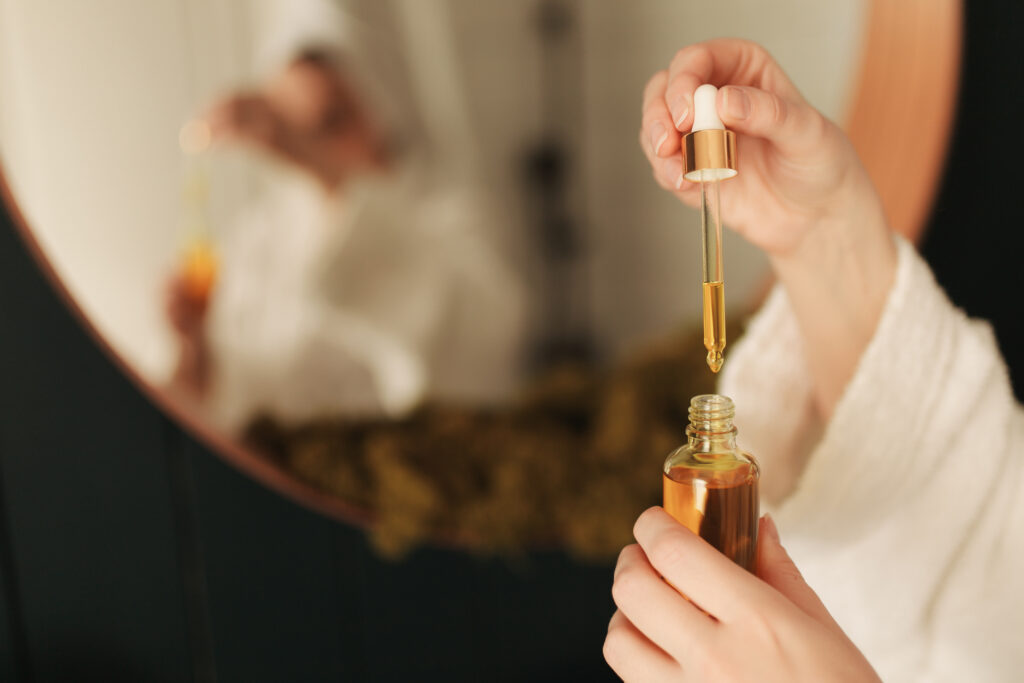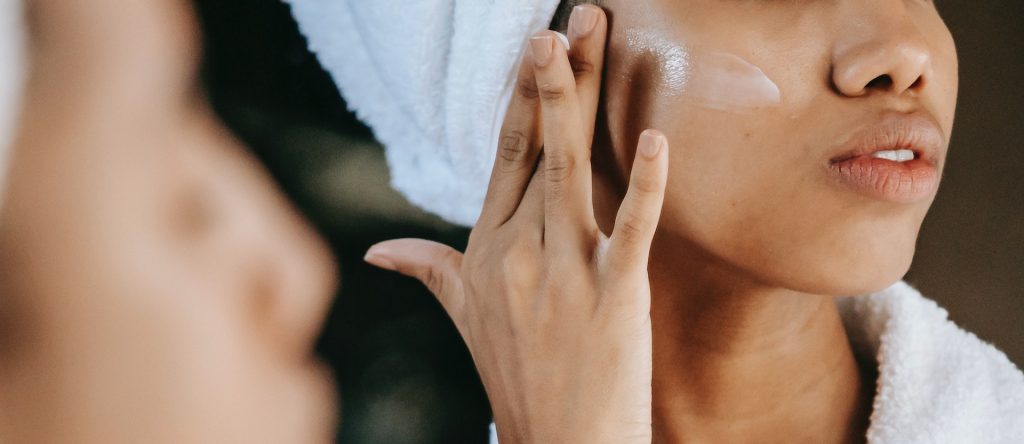When it comes to our skin, we all want the luminous visage that makes us look good, indicates we’re healthy, and boosts our self-image. But achieving that ideal appearance can be a challenge, in part because skin is complicated and varies considerably from one person to the next. Most of us fall into either a dry or oily category, with different care approaches needed for best results. Here are some tips for Dry vs. Oily Skin
Figuring Out Your Skin Type
Learning out how best to care for your skin starts with understanding what kind of skin you have. Here’s a simple, at-home test.
Start by washing your face with a gentle soap or cleanser. Without adding any type of product, wait 30 minutes or so. Then, dab your forehead and nose with a tissue. If any oil or greasy residue rubs off onto the tissue, it’s a sign your skin is oily. If the tissue stays dry but your face feels rough or tight, likely you’ve got skin that’s dry.
Now that you know what’s you’re dealing with, you can proceed with finding the strategies that work for you.
Caring for Dry Skin
Dryness is due to water loss from the outer skin layer, leaving skin itchy, flaky, reddish, or scaly. Skin may be dull and ashy; fine lines, peeling, and cracking are common symptoms as well. Causes for xerosis or xeroderma (the scientific terms for dry skin) are often environmental, like cold or dry weather, artificial heating from furnaces and fireplaces, sun exposure, living conditions, excessive washing, and exposure to irritants. Aging, genetics, and skin tone also factor in, as do health status and certain medical conditions. Vitamin B deficiency is a possibility, although consultation with a healthcare professional is needed to figure that one out. Also see your doctor if cracking and roughness become serious enough to bleed. Broken skin allows germs and bacteria to enter the body, potentially leading to a skin infection. Persistent or extreme dryness can also be caused by conditions like eczema or psoriasis, which require medical diagnosis and treatment.
For most of us, dry skin is just unattractive and uncomfortable. It’s something that can be improved with lifestyle changes, readily available products, and a consistent care routine. To help skin retain moisture:
- Limit water exposure during showers or baths to 10 minutes or less, only once a day. Use warm, not hot water, and pat dry without rubbing.
- Cleanse gently with a non-soap, fragrance-free, no-alcohol cream or gel. Wash you face twice a day only, in the morning to get rid of dust, bacteria, and sleep residue, and at evening to remove makeup and impurities accumulated during the day. Look for products with hydrating ingredients like aloe vera, avocado, glycerin, hyaluronic acid, jojoba oil, lanolin, and olive oil.
- Moisturize while skin is damp, at least twice daily, to seal moisture into the skin’s protective barrier. Use products that contain ceramides, glycerin, hyaluronic acid, jojoba oil, or shea butter. Ointments or creams may be better than a lotion because they contain more oil. Some skin specialists also recommend a toner to remove traces of dirt and bacteria while refreshing gently, although many people get along fine without it. Exfoliation should be sparing at best because the harsh ingredients often irritate already dry skin.
- Use sunscreen, even on cloudy, grey days. UV rays are always present, and exposure further damages dry skin. After swimming, be sure to rinse and moisturize, especially if you’re working out in heavily chlorinated pools.
- Cover as much skin as possible in cold, windy weather and wear gloves when gardening, putting hands in water, using harsh chemicals, or doing other skin-drying activities.
- Stay hydrated by drinking plenty of water and noncaffeinated beverages to keep the body’s tissues, including your skin, moisturized from the inside.
Dry skin people want to avoid products containing ingredients that make your condition worse. To do that, look out for alcohol, benzoyl peroxide, chemical peels, fragrances, glycolic acid, retinoids, and salicylic acid in anything you put on your skin.

Caring for Oily Skin
Oily skin appears glossy, greasy, and slippery, with visible pores and a shiny complexion. Everybody’s skin produces oil in the form of sebum, which comes from the sebaceous glands and is part of the hydrolipidic film that covers and protects against bacteria, dirt, grime, and other external substances. But too much sebum from genetics, hormones, stress and other causes (seborrhea is the medical term) can lead to clogged pores and breakouts of blackheads, whiteheads, and acne; red, swollen, painful, unhealthy skin can result.
Caring for this type of skin means clearing it of excess oil. Surprisingly, many treatments are similar to those for dry skin, although differing products may be involved.
- Wash your face morning and evening, adding after exercise to your routine. Use a gentle, foaming cleanser that’s oil-free, non-comedogenic, non-allergenic, and rinses off easily. The instinct with oily skin is to wash multiple times daily, scrubbing vigorously with an abrasive agent. That only causes irritation, which skin reacts to by producing more oil for protection—exactly what you’re trying to avoid. Rough washcloths or loofahs add friction and have the same oil-increasing affect.
- Apply moisturizer at least once a day. A lightweight, non-comedogenic, oil-free product won’t make skin oilier or trap breakout-causing debris in pores, but it will keep skin hydrated, which is what all skin needs. Use sunscreen, too, perhaps in place of your morning moisturizer application or in a moisturizer-sunscreen combination. Use of a mild toner or natural astringent can further soothe skin and remove bits of pore-blocking makeup or debris.
- Blot your face as needed throughout the day to get rid of excess oil build-up and shine. Just hold a blotting paper gently against your face but stop rubbing; that just spreads the oil.
- Use water-based makeup and apply lightly. Trying to hide shiny skin or breakouts with heavy makeup only makes symptoms worse by clogging pores and stimulating oil production.
- Try retinoids and gentle exfoliation. Oily complexions may benefit from the use of retinoids because they boost skin cell turnover and clear out dead cells. A gentle, exfoliating wash can also help by removing the dead cells that trap sebum and cause acne to form.
- Avoid touching your face throughout the day. Doing so can spread bacteria, dirt, and oil from one area to another, increasing greasiness and backing up pores.
Ingredients like cocoa butter, coconut oil, petroleum jelly, and silicone are oily by nature, adding grease to skin rather than removing it. Alcohol and fragrances should also be avoided because they’re irritants, and irritation equals more oil.
Finding a Routine That Works for You
Whether your skin is dry, oily, or somewhere in between (normal, well-balanced skin is called eudermic), skin care is very individualized. You may have to try several items to find what’s best for you.
Being aware of your skin type is a good place to start because that way you have some idea of the results you want to achieve. As you survey the huge array of products vying for your money and attention in stores and online, beware of unrealistic promises and miracle cures. And remember that high cost and good quality are not necessarily the same thing. Above all, you want to be comfortable with your skin’s condition and confident you’re achieving the best possible look for you. Understanding dry vs. oily skin types can help you with which products to use.
